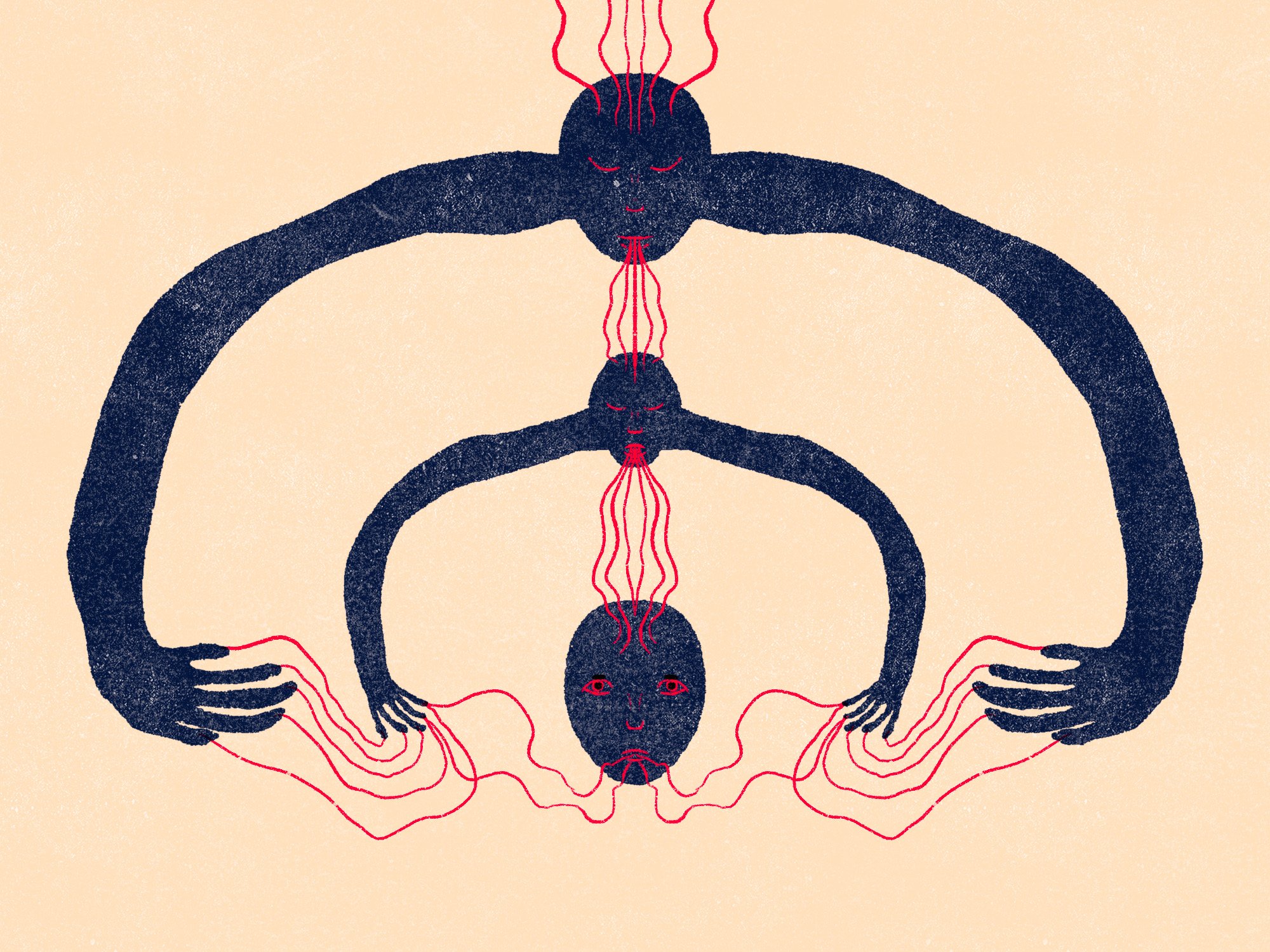If you’ve been paying attention to the internet, you might have noticed that Disney has been tackling some pretty heavy topics lately, one of those being the impact of generational trauma. FromMoanatoBravetoEncantotoTurning Red, Disney is proving that they can take complicated concepts — such as trauma, complex family relationships, and eldest daughter syndrome — and make them understandable and entertaining for a younger audience.
While some of these topics might seem too intense for children at first glance, recent movies addressing these darker subjects have been popping off at the box office and trending on social media, not to mention capturing our hearts (and sometimes, hitting us where it really hurts).
So What Exactly Is Generational Trauma?
The psychological effects of collective trauma spanning across multiple generations is referred to as intergenerational, transgenerational, or generation trauma. It typically begins as a singular traumatic event experienced decades in the past that trickles down and impacts the way that future generations comprehend, cope with, and heal from their own trauma. In families, this can look like cycles or patterns that individual members can’t seem to break and as a result, pass down to their children.
InEncanto, this initial traumatic event is when Abuela’s husband, Pedro, is murdered right in front of her, and she is forced to raise their triplets alone and homeless. To cope with this devastating loss, Abuela tries to control everything and everyone around her in an effort to protect them from the dangers of the world. The family’s magic becomes more important than anything else because it acts as a barrier between the Madrigals and the rest of the world, protecting both them and the community. In turn, each of Abuela’s children develops their own coping mechanisms and traumas, as do their children, and so on — until we come to the protagonist, Mirabel, who finally breaks the cycle of generational trauma.
Encantoalso covers several other important topics, such as the pain of estranged or lost family members (“We Don’t Talk About Bruno”), the burden of being the strongest sibling (“Surface Pressure”), feeling like an outsider in your own family (“Waiting on a Miracle”), and the pressure of being the perfect child (“What Else Can I Do?”).
InTurning Red, we see the main character, Mei, break generations of trauma caused by the rejection of the inner Panda, which Mei’s ancestors view as a curse rather than a gift. By rejecting their true selves, the women in the family suffer from a loss of identity and become overprotective and controlling of their daughters. When Mei decides to stay true to herself, her mother’s trauma reveals itself in a big way (literally).
In both of these films, the female lead ends her family’s cyclical trauma and gives the family a fresh start, free from the initial traumatic event that was passed down through the generations. Now, both Mirabel and Mei are leading the way for a new generation of kids who (hopefully) won’t have to hide their true selves.
Why Is Generational Trauma “Trending?”
While generational trauma itself is certainly not new, it is relatively new as a topic of discussion in TV shows, movies, and other forms of entertainment. So why are we seeing a sudden influx of trauma talk in film?
According to theCDC, one in seven children has experienced abuse or neglect during the previous year. Every minute, 20 people are physically abused by an intimate partner. Around 10% of women and 4% of men will develop PTSD during their lifetime. Half of all women and 20% of men experience sexual violence during their life. It’s no wonder that movies about overcoming trauma and healing our inner child are so popular — they hit close to home and in most cases, give us a happy ending or satisfying resolution to a horrible situation when that might not be possible for us in our own lives.
For a child who is currently experiencing a challenging home life, abuse, or neglect, watching a character overcome or escape on-screen is extremely powerful and inspires hope. And for adults who are trying to break the cycle of generational trauma for their own kids, these messages are actually reminders of how far they’ve come. In a society where healing our inner child and breaking cycles has become dominant, movies likeEncantoandTurning Redare not only relevant but also serve as reminders that we’re not alone in our struggles.
Healing the Inner Child Through Kids Movies
While it’s probably true that Disney is reading their audience by paying attention to statistics and what this generation is going through and creating content accordingly, it’s also likely that, as adults, we’re finally reading into the darker, more complex subject matter in kids movies.
When you think about it, Disney has always explored complex topics broken down into simple stories for a child audience. Cinderella comes from a broken family who treats her terribly, Bambi deals with the loss of a parent, Rapunzel has been isolated from society by an evil mother, Robin Hood focuses on greed and standing up to immoral authority figures, Elsa goes on a journey of self-acceptance — all of these films cover some pretty heavy topics masked with beautiful animation, catchy songs, and loveable characters. It only takes a little bit of self-examination to realize how each Disney movie speaks to us individually.
Disney has always done a great job of staying relevant to the times and bringing us quality content that mirrors what society is currently going through. In some circumstances, such asToy Story, the characters quite literally grow up with us, so it only makes sense that as this generation breaks barriers and heals generations and generations of trauma, we’ll see our favorite characters do the same.
Sources:

